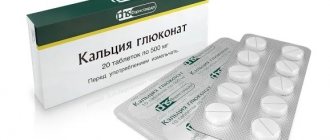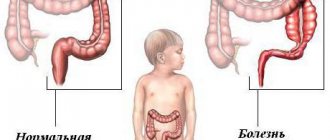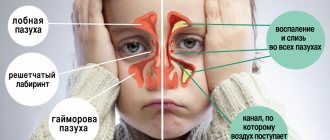Calcium is the most important building material for bones, teeth, and nails. However, the role of this element is not limited to this, because it is also necessary for regulating the functioning of the nervous system, blood clotting and muscle functions.
Normally, the calcium level in the blood is 8.5-10.5 mg/dL or 2.1-2.6 mmol/L. With a slight calcium deficiency, the body copes on its own, taking it from bone resources. In this case, they talk about decalcification or demineralization of bones.
As the defects increase, the bones become brittle, porous, and prone to deformation and fracture. For children, this situation is fraught with rickets and slow tooth growth, and therefore poses a particular danger.
For the proper absorption of calcium, the body needs vitamin D. Most people know that these two components work in pairs and if one is missing, the mineralization process will not occur as it should.
If there is a deficiency of vitamin D, then the process of calcium absorption drops from 30-50% to only 10-15%.
Why is calcium so important?
Calcium in children's bodies is responsible for proper and harmonious development. If the mineral is present in the proper amount, then bones and teeth will also be in the correct condition, because calcium is the basic building material for these elements of the body. Among other things, calcium helps in maintaining the correct acid-base balance, metabolism, transmission of nerve impulses and is involved in normalizing the process of cell division.
The body's daily need for calcium is 1000 mg per day for a child from one to three years old. If there is not enough calcium, then a deficiency develops, which can cause the development of rickets and defects in the skeleton.
The norm of calcium in the body of a newborn
A baby is born with a certain supply of vitamins and elements that he received from his mother during intrauterine development. This also applies to calcium. It is not synthesized in the human body and during life it enters it only from food (or medications). It is very important for the expectant mother to prevent calcium deficiency during pregnancy - otherwise she will have to “provide” the fetus with a valuable element at the expense of her bone tissue. During the months of expecting a baby, almost all women notice that their hair becomes more brittle and their nails become brittle. You can avoid these problems by taking vitamins. Particular attention should be paid to the problem of calcium deficiency at the beginning of the first and at the end of the third trimester.
As we have already mentioned, calcium is not only a building material. The element is involved in muscle contraction, affects neuromuscular conduction, regulates acid balance and blood pressure, and activates hormones of the endocrine system. A lack of calcium in a child can lead to rickets, stunted growth, heart disease and other unpleasant consequences.
#PROMO_BLOCK#
The normal level of calcium in the blood of a newborn is considered to be in the range of 1.8 – 2.65 mmol/l. From the first days of life, a baby needs a constant supply of macronutrients to the body. Up to 6 months, the baby needs 400 mg of calcium daily, from six months to a year - the norm increases to 600 mg, after 1 year and until about 10 years old, the child needs to receive 800 mg of calcium per day. An excess of calcium in a child’s body is rarely observed, since excess macronutrients are easily excreted in the urine.
Symptoms indicating a lack of calcium in the child’s body:
- Convulsions, tremors, muscle twitching;
- Nervousness;
- Increased sweating (especially at the back of the head);
- Hair loss (also on the back of the head);
- Labored breathing.
There are two simple methods that can help confirm calcium deficiency:
- Lightly squeeze the child's hand in the shoulder area - the baby's fingers will cramp.
- Lightly tap the cheek near the corner of the mouth - the facial muscles will twitch or cramp.
During the period when the baby eats only mother's milk, it is she who needs to monitor her diet and enrich it with foods rich in calcium. It is interesting that, although breast milk does not contain much of this macronutrient, it is from it that it is absorbed almost completely (of others, only 20–50%).
What foods are rich in calcium:
- Dairy products (milk, yogurt, sour cream, cottage cheese, cheeses, butter, etc.)
- Fish
- Egg yolk
- Nuts (especially almonds and Brazil nuts)
- Sesame, poppy
- Legumes
- Oatmeal
- Different types of cabbage
- Greenery
- Dried fruits
When complementary feeding begins, introduce calcium-containing products into your baby’s menu (of course, wisely and taking into account age and tendency to allergies). An older baby may be prescribed vitamins. You should not give your child calcium without consulting your pediatrician. The question of prescribing any drug must be decided by a specialist. Also remember that for good absorption of calcium, a sufficient amount of vitamin D must be present in the baby’s body. This means that you need to walk with the child more, especially on a sunny day. Also, the level of calcium is closely related to the content of phosphorus and magnesium in the blood; monitor the indicators of these elements.
Calcium deficiency: main symptoms
Low calcium levels in the body can be caused by a number of factors. First of all, this is a lack of vitamin D. However, this can also be affected by taking certain foods at the same time that interfere with the absorption of calcium.
- oxalates – compounds that are present in beets, rhubarb, sorrel, and a number of mineral waters;
- phytates - found in legumes, so before cooking you should soak them to wash these substances out of them;
- Phosphates are a popular preservative and are therefore found in many foods.
Hypocalcemia manifests itself with harmless symptoms, but this is only at the beginning. These symptoms should not be taken lightly. To begin with, calcium deficiency can manifest itself in the form of muscle spasms, joint pain, numbness, and slow heart rate. Irritability and sleep disturbances may also be present. If the deficiency intensifies, then frequent nosebleeds, dental defects, and causeless anxiety may occur. With severe calcium deficiency, there may be frequent bone fractures and fragility.
Total calcium
Total calcium
- a predominant microelement, the most important component of bone tissue.
It performs basic structural, metabolic and regulatory functions in the body. Total calcium
is the concentration of the ionized (free) and protein-bound form of calcium. Calcium participates in physiological processes only in ionized form.
General calcium takes part in the construction of the skeleton, heart function, neuromuscular activity, blood clotting and many other processes. Calcium metabolism is closely related to the skeletal system and the functioning of the parathyroid glands. About 99% of calcium is found in bone tissue (teeth, skeletal bones) and only about 1% is found in blood serum and other biological fluids of the body. In bones, calcium is contained in the form of hydroxyapatites - crystals that, in addition to calcium, contain phosphates.
Calcium is found in the blood in three forms:
- ionized (free) calcium, which is physiologically active;
- calcium complexed with anions - lactate, phosphate, bicarbonate, citrate;
- calcium bound to proteins - mainly albumin.
In the body, calcium performs the following functions: creates the basis and ensures the strength of bones and teeth;
participates in the processes of neuromuscular excitability (as an antagonist of potassium ions) and muscle contraction; regulates the permeability of cell membranes; regulates enzymatic activity; participates in the process of blood coagulation (activates VII, IX and X coagulation factors). Calcium homeostasis
Calcium homeostasis (constancy of blood levels) is the result of the balance of the following processes: absorption in the intestines, metabolism in the bones, reabsorption and excretion in the kidneys. These processes are regulated by the main regulators of calcium metabolism: parathyroid hormone and calcitriol (vitamin D3), which increase the level of Ca in the blood, and calcitonin, which reduces its level in the blood, as well as other hormones.
Laboratory signs of calcium metabolism disorders are hypo- and hypercalcemia. A decrease in the level of albumin of any origin (hence, a decrease in the protein-bound fraction of total calcium) causes a decrease in the total concentration of calcium in the blood serum, while the content of biologically active free (ionized) calcium changes little. Therefore, it should be kept in mind that the calcium level in a blood sample may be falsely low if the sample is taken under conditions of local venous stasis. Due to hypoalbuminemia, a decrease in the level of total plasma calcium is observed in cases of protein malabsorption, chronic diseases, a diet with insufficient amounts of protein, liver cirrhosis, and nephrotic syndrome. In such cases, if necessary, they practice determining the content of ionized calcium or using a calculation formula that corrects for the reduced level of blood albumin.
Indications:
- diagnosis and screening of osteoporosis;
- muscle hypotonia;
- convulsive syndrome; paresthesia;
- peptic ulcer of the stomach and duodenum;
- polyuria;
- cardiovascular pathology (arrhythmias and impaired vascular tone);
- preparation for surgery;
- hyperthyroidism;
- malignant neoplasms (lung cancer, breast cancer);
- urolithiasis (X-ray-positive stones) and other kidney diseases;
- bone pain.
Preparation
It is recommended to donate blood in the morning, between 8 am and 12 pm. Blood is drawn on an empty stomach, after 6–8 hours of fasting. It is allowed to drink water without gas and sugar. On the eve of the examination, food overload should be avoided.
Interpretation of results
Units of measurement: mmol/l.
Increased calcium levels (hypercalcemia):
- primary hyperparathyroidism (hyperplasia, adenoma or carcinoma of the parathyroid glands);
- malignant tumors with: a) osteolysis of primary or metastatic bone lesions, especially with metastases of breast, lung, and kidney cancer; b) ectopic synthesis of parathyroid hormone in carcinoma of the kidneys, ovaries, thyroid gland, uterus;
- thyrotoxicosis;
- immobilization hypercalcemia (during immobilization for therapeutic purposes for injuries, Paget's disease, congenital hip dislocation, spinal tuberculosis, etc.);
- hypervitaminosis D;
- adrenal insufficiency;
- hemoblastoses (myeloma, lymphomas, leukemia - with the breakdown of bone tissue in areas of hyperplasia);
- idiopathic hypercalcemia of newborns (Williams syndrome);
- hereditary hypocalciuric hypercalcemia;
- acute renal failure;
- sarcoidosis and other granulomatous diseases;
- iatrogenic hypercalcemia;
- milk-alkali syndrome;
- kidney disease (tertiary hyperparathyroidism);
- overdose of thiazide diuretics.
Low calcium levels (hypocalcemia):
- primary hypoparathyroidism (hereditary, X-linked, DiGeorge syndrome);
- secondary hypoparathyroidism (as a result of surgery, autoimmune);
- hypoparathyroidism in newborns with hyperparathyroidism in the mother;
- hypomagnesemia;
- pseudohypoparathyroidism (hereditary disease caused by a lack of tissue target receptors for parathyroid hormone);
- hypovitaminosis D with rickets in children and osteomalacia in adults (as a result of reduced insolation, malabsorption and nutritional disorders);
- hypoalbuminemia in nephrotic syndrome and liver pathology;
- acute pancreatitis with pancreatic necrosis;
- chronic renal failure;
- liver failure;
- taking antitumor drugs, anticonvulsants, EDTA, neomycin;
- sequestration of calcium ions (acute alkalosis, increased phosphates, transfusion of large amounts of citrated blood).
Hypercalcemia: signs
But hypocalcemia is not the only danger. Excess calcium can also have unpleasant and even fatal consequences for the body, especially a growing one. Very often, this phenomenon occurs when dietary supplements are taken incorrectly. Symptoms of excess calcium:
- nausea;
- constipation;
- lack of appetite.
If there is a strong excess of calcium over a significant period, kidney stones can occur. Excess calcium also interferes with the absorption of zinc and iron, which can lead to anemia.
Children should receive a balanced diet so that all vitamins and minerals are properly absorbed. Every parent should remember this and then there will be no reason to worry.










